Contents:
Tracking membership success for your subscription-based business can be broken down into a series of steps. Each step includes the use of key metrics and their basic formulas that indicate how well your business is doing.
At a glance, these formulas may seem intimidating, but they are really simple to understand and use when you know how they work. Take measuring the Monthly Recurring Revenue of your business or MRR. To find this, you’ll use this formula:
MRR = (Number of customers) x (Average revenue per user).
And just like that, you now know how much money you make from all active subscriptions in a month.
This guide is dedicated to breaking down each formula for tracking membership success, and a little more. You’ll also get tips on how to improve your business in areas where formulas show it’s waning. Let’s dive into key financial health metrics.
Tracking Membership Success with Key Metrics
Key metrics point to the health of your business. Knowing what they are and how to use them makes it easier to troubleshoot underperformance. You’re able to quickly identify which areas of your business has taken a dip and act swiftly to produce better results. You’ve seen how MRR shows what you make in a month from all active subscriptions, but there are several other valuable metrics (and formulas) that give an in-depth analysis of how your business is really doing, and here they are:
Monthly Recurring Revenue (MRR)
Monthly Recurring Revenue (MRR) is a reliable measure of predictable monthly revenue from customers. It helps evaluate cash flow and overall financial health of such businesses by consistently reflecting income from your customer base.
As a quick recap, here’s the formula for calculating your MRR:
MRR = (Number of customers) x (Average revenue per user).
The significance of MRR extends beyond basic revenue calculation. It’s instrumental in strategic planning, offering a clear view of consistent revenue streams, and allowing you to create more accurate budgets and financial forecasts. It also makes it easier to understand business growth trends and the financial impact of new customer acquisitions or customer churn (more on both of these later). When considering tools to support your business metrics, exploring the best CloudTalk alternatives ensures you choose the right solutions for call management and customer communication, enhancing overall performance.
Annual Recurring Revenue (ARR)
Where MRR is based on monthly revenue, Annual Recurring Revenue (ARR) provides a measure of predictable and recurring revenue generated annually by customers. It’s pivotal for long-term financial planning and assessing the health and growth potential of a business. ARR reflects the stability and scalability of a company's revenue streams and is commonly utilized by investors and stakeholders to gauge company performance.
The formula to calculate ARR is straightforward:
ARR = MRR x 12, where MRR stands for Monthly Recurring Revenue, the average revenue generated monthly.
For businesses offering direct annual subscriptions, ARR is determined by summing the total value of these subscriptions. According to Younium, the accounting challenges associated with B2B recurring revenue is recording revenue as per the rules and regulation.
In cases where businesses have a mix of subscription durations, like monthly, quarterly, and yearly, the annualized value of each subscription type is calculated and then summed to ascertain the total ARR.
Conversion rates: from trial to paid subscriptions
Tracking conversion rates from trial to paid subscriptions gives you the percentage of users who transition from a free trial to a paid subscription. And this is a big deal, especially if you offer a trial.
Knowing your conversion rate is a clear indicator of whether your product or service meets the needs and expectations of its potential customers. A high conversion demonstrates the value of the product or service, encouraging more users to commit to a paid subscription.
Calculating this conversion rate is simple:
Conversion Rate = (Number of users who convert from trial to paid / Total number of trial users) x 100.
For instance, if 500 users sign up for a free trial and 100 of them convert to paying customers, the conversion rate would be (100 / 500) x 100, equating to 20%.
The success of your conversions also helps shape marketing strategies and product development. It can show whether changes are necessary to increase the likelihood of converting trial users into paying customers.
Customer Acquisition Cost (CAC)
Customer Acquisition Cost (CAC) represents the average total cost a company pays to gain a new customer. This cost includes all marketing and sales expenses over a given period, divided by the number of new customers acquired in that period.
CAC serves as a key performance indicator, assessing the return on investment of marketing initiatives and the effectiveness of a company's growth strategy.
The formula to calculate CAC is straightforward:
CAC = Total Cost of Sales and Marketing / Total Number of New Customers Acquired.
If a company spends $50,000 on sales and marketing in a quarter and acquires 500 new customers during that period, the CAC would be $100 per customer ($50,000 / 500).
CAC highlights the efficiency of customer acquisition strategies. A lower CAC suggests more effective customer acquisition, conducive to sustainable business growth. On the contrary, a high CAC may indicate a need for optimizing marketing and sales strategies.
Customer Lifetime Value (CLV)
Customer Lifetime Value (CLV) represents the total revenue a business can expect from a single customer account over the duration of their relationship with the company. It establishes the long-term value of customers and is important for evaluating the profitability of retaining existing customers compared to acquiring new ones.
As with CAC and other key metrics, CLV also offers keen insights for fine-tuning marketing strategies and efficiently allocating resources. A high CLV value is a sign of a healthy business, whereas a low CLV is a signal to find ways to improve your business.
The calculation of CLV in a subscription context typically follows the formula:
CLV = Average Revenue Per User (ARPU) / Customer Churn Rate.
As an example, with an ARPU of $100 and an annual churn rate of 10%, the CLV would be calculated as $100 / 0.10, resulting in a CLV of $1,000. This implies that, on average, each customer contributes $1,000 in revenue during their tenure with the company.
Membership Retention Rates (Measuring Loyalty and Satisfaction)
Membership retention rates provide the percentage of members who continue their subscriptions over a certain period, offering a clear picture of the membership base's overall health.
There are loads of membership site examples showing how smart and simple tweaks to a membership business can be lucrative, and retention is a major factor in each example. A high retention rate is indicative of a satisfied and loyal member base, while a low retention rate points towards member dissatisfaction or disengagement.
To calculate membership retention rates, the following formula is used:
Retention Rate = [(Number of active members at the end of a period - Number of new members acquired during that period) / Number of members at the start of the period] x 100.
If a membership organization starts the year with 1,000 members, loses 100 but gains 200 new members, the retention rate would be calculated as [(1,000 - 200) / 1,000] x 100, resulting in an 80% retention rate.
Churn Rate (Understanding and Minimizing Losses)
Churn rate measures the percentage of subscribers who end their subscriptions within a specific time frame. It’s a direct indicator of customer satisfaction and loyalty and if you’re able to minimize it, you’ll generate more revenue over time.
To calculate the churn rate, the basic formula is: Churn Rate = (Number of Lost Customers / Total Customers at the Start of Time Period) x 100.
For example, if a business begins a month with 1000 customers and loses 50 by the end of that month, the churn rate would be calculated as (50 / 1000) x 100, resulting in a churn rate of 5%.
Churn rate is often a good measure of several aspects that influence how customers feel about your product or service. High customer dissatisfaction and poor customer engagement typically result in a high churn rate, however, intense competition can also be a factor. More competition can result in customers jumping ship for more competitive deals.
Upselling and Cross-Selling Rates (Maximize Revenue Per User)
Upselling and cross-selling are used to increase Average Revenue Per User (ARPU) and overall profitability. Where upselling encourages customers to purchase a more expensive version of a product or service, cross-selling recommends additional products or services.
Calculate your Upselling Rate as follows:
(Number of customers who purchased upgraded services or products / Total number of customers) x 100.
Similarly, the Cross-Selling Rate is calculated using: (Number of customers who purchased additional products or services / Total number of customers) x 100.
In a scenario where a business has 1000 customers, with 200 opting for upgraded subscriptions (upsell) and 150 purchasing additional services (cross-sell), the upselling rate would be (200/1000) x 100 = 20%, and the cross-selling rate would be (150/1000) x 100 = 15%.
Tips for Improving Financial Health
While waning results are a clear indication of less-than-desirable performance, you may find yourself searching for ways to improve your already okay performance. As a subscription-based membership business, customer acquisition and retention are two of the most important levers you can pull on and here is how.
Customer Acquisition Tips
- Create Targeted Marketing Campaigns
Develop marketing campaigns that are tailored to your ideal customer profile. Use data analytics to understand customer preferences and design targeted campaigns that speak directly to their needs and interests. This includes leaning into content marketing and SEO to drive traffic with attractive content and offers.
Backbody Project has built a community of followers using blog posts and social content. Owner and founder, Meegan Gregg, uses content to share life updates and snippets of workouts available through her membership service.
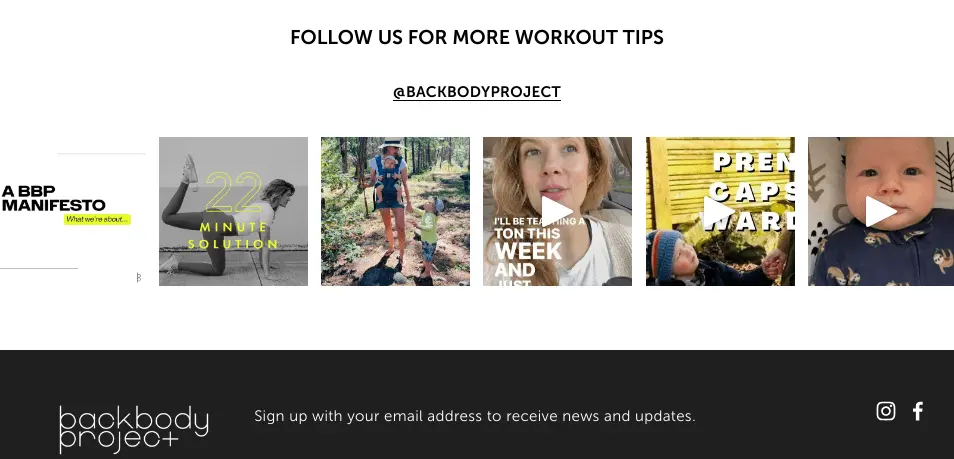
- Engage on Social Media
Leverage social media platforms to build a community around your brand. Regularly post engaging, relevant content and interact with your audience to create a loyal following.

Big Picture Skiing makes it a point to reply to comments on Instagram, driving engagement in the form of likes and shares of their content.
- Offer Free Trials and Demos
If you’re not already, consider offering free trials or demos of your service to give prospects a firsthand experience of your offering’s value. Experiencing what your offering can do live can significantly increase the likelihood of conversion to paid memberships.

Means TV is the world’s first worker-owned streaming service committed to showcasing anti-capitalist content. It offers users a free 7-day trail with access to an extensive catalog.
- Use Email Marketing
Tap into email marketing to nurture leads by providing them with useful information, updates, and special offers that encourage them to subscribe.
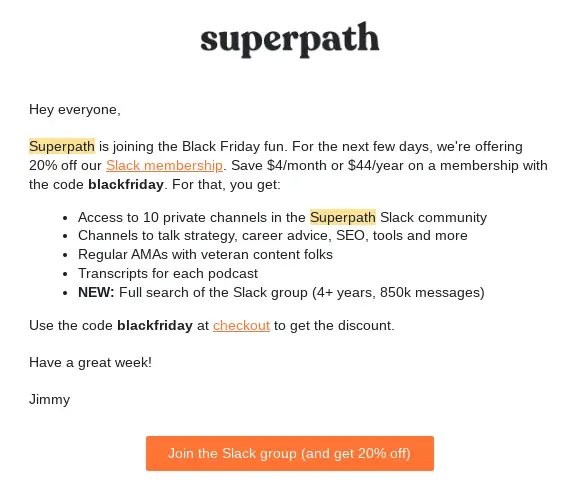
Superpath uses email to make offers. In this example, the company ran a Black Friday offer with a 20% discount for anyone interested in joining their Slack group.
- Invest in Partnerships and Collaborations
Collaborate with other businesses or B2B influencer marketing agencies that align with your brand to reach a wider audience and gain credibility.

Beauty box subscription service, Birchbox, often works with influencers. Most features showcase a product and why an influencer loves it – a smart and effective way to reach a wider audience.
- Incentivize Renewals and Referrals
Incentives and referrals can be powerful ways of giving your revenue a boost. Renewal and referral incentives can include discounts on future billing, complimentary upgrades, or other benefits.
A compelling renewal offer can encourage members to stick with your product/brand, and also serves as a way for you to acknowledge your clients’ loyalty while increasing the perceived value of the subscription.
Well-structured referral programs can deliver more new customers with lower CACs, simply because you already have access to an installed base of customers, each with a personal or professional network, that you can leverage.
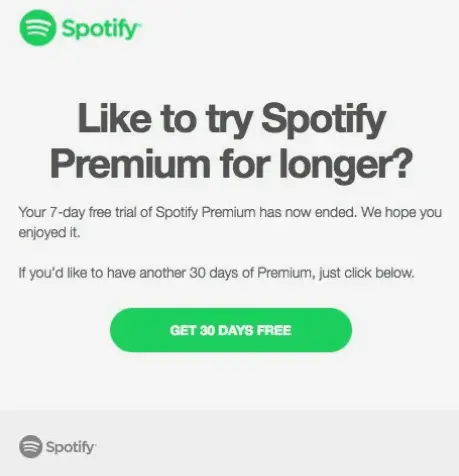
Spotify goes above and beyond to make members warm up to its service. In this example, they offer an additional 30-day trial after a member’s 7-day trial expires.
Customer Retention Tips
- Deliver Personalized Communication
66% of customers expect brands to understand their wants and needs. It’s clear that personalization is a big deal. Use it to regularly engage with members through personalized emails, newsletters, or notifications. On that note, cold email tools are frequently used for outreach efforts personalized for each customer. Tailoring communication based on member preferences and history enhances the sense of value and belonging.
- Ask for Feedback
Did you know that as much as 48% of consumers expect a response within 24 hours to a social media query? While manning social accounts sounds like a chore, it’s a smart and easy way to get direct feedback from customers. Establish channels for customers to reach you and ensure prompt and thoughtful responses to their queries and concerns. This demonstrates that you value their input and are committed to improving their experience.
- Use Segmentation and Targeted Offers
Segmentation can lead to massive bottomline gains, regardless of the type of business you’re in and Royal Canadian Mint is a prime example. By applying segmentation strategies its customer base grew by 144,000 customers.
Segment your members based on their behavior, preferences, and subscription history. Offer targeted promotions, discounts, or exclusive content to different segments to make them feel special and understood.
- Create a Loyalty Program
Loyalty programs are more effective than most brands realize. In just a year, The North Face saw a 33% bump in topline revenue by revamping its loyalty program and its app, XPLR Pass, was a key touch point for customers.
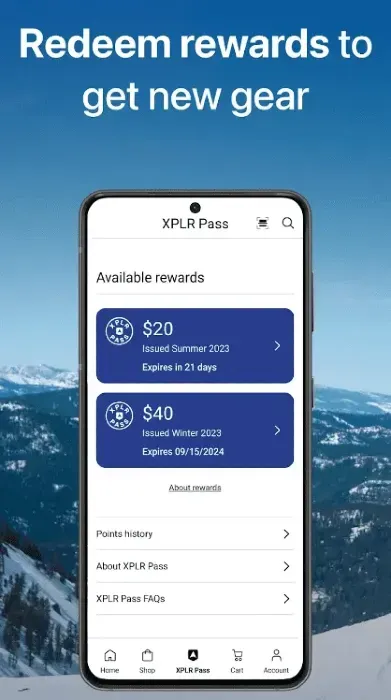
By rewarding members for their continued subscriptions, you could see greater retention and a revenue increase. Loyalty can be recognized in the form of tiered rewards, points systems, or special access to new features or content.
- Make Regular Updates and Improvements
Continuously update your service or product based on member feedback and market trends. Keeping your offering fresh and relevant is crucial for member retention.
- Offer Proactive Customer Service
Everyone knows that providing great customer service is a smart choice. And stats don’t lie. People are 5.1 times more likely to recommend your brand if they receive excellent customer service. They are also 3.5 times more likely to spend more money with you too.
Great customer service is about more than responding to customer problems. Anticipate potential issues and reach out to members proactively. This could involve notifying them of upcoming changes, offering help with new features, or checking in to ensure they’re satisfied with the service.
- Focus on Data-Driven Insights
Invest in a CRM tool to gather data on member interactions, preferences, and behaviors. Analyze this data to gain insights into what keeps members engaged and satisfied. Research shows that top brands have seen as much as a 33% increase in revenue just by using CRM data in targeted marketing campaigns.
- Commit to Community Building
Foster a sense of community among members through forums, social media groups, or unique events. When members feel part of a community, they are more likely to stay engaged and continue their subscription.
And this is backed by research. How Brand Community Practices Create Value, a research paper examining the impact of brand communities found that people form a greater sense of affinity for a brand and each other when they experience shared experiences, like consuming content.
- Optimize Your Pricing Model
There’s a good chance that you’ve seen competitors or other brands offering tiered or value-based pricing models. These are effective for catering to various segments of your membership base and worth testing to find your subscription business’s sweet spot.
Here are seven pricing models you can test to find the most effective approach for your brand:
Multiple Pricing Tiers
Offer various tiers to cater to different segments. This approach allows customers to choose a plan that best fits their needs and budget, increasing the likelihood of subscription.
Value-Based Pricing
Set prices based on the perceived value of your service rather than just on costs. Understanding what your target market is willing to pay for your service is key in this strategy.
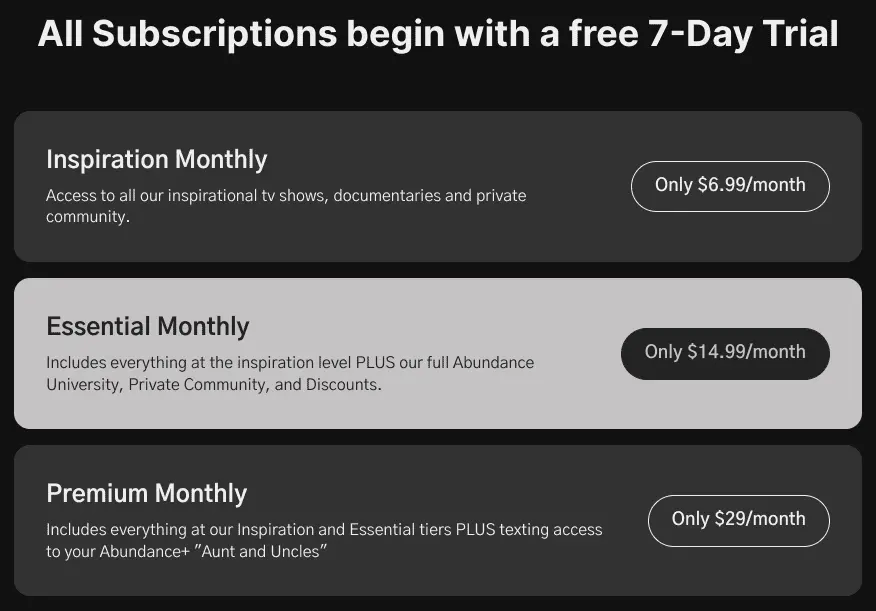
Abundance+ is a homesteading community that offers members a combination of multi-tier and value-based pricing models. Together, these models communicate tons of value.
Cost-Plus Pricing
Calculate the total cost of providing your service (including fixed and variable costs) and add a markup for profit. This straightforward approach ensures that all costs are covered.
Usage-Based Pricing
Implement pricing based on usage levels. This can attract a wider range of customers, from those who use the service minimally to heavy users.
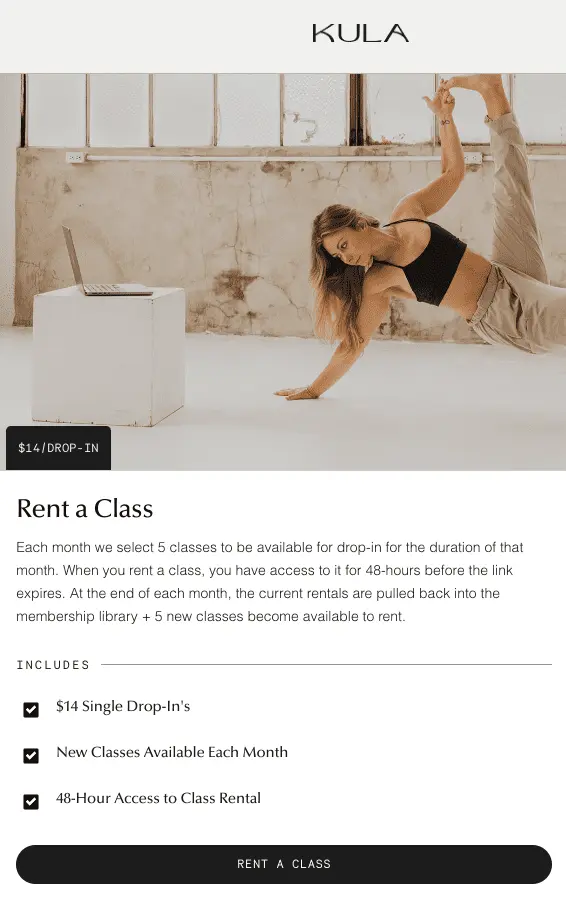
Kula offers an online library of yoga, breathwork, meditation classes and in-person yoga retreats. To introduce prospects to their yoga experience, Kula provides a new set of 5 classes for rental each week. It’s a smart way to make their product available to prospects who may not be ready to commit without testing the waters.
Freemium Models
Offer a basic version of your service for free while charging for advanced features. This can be an effective way to attract new users and convert them to paying customers.
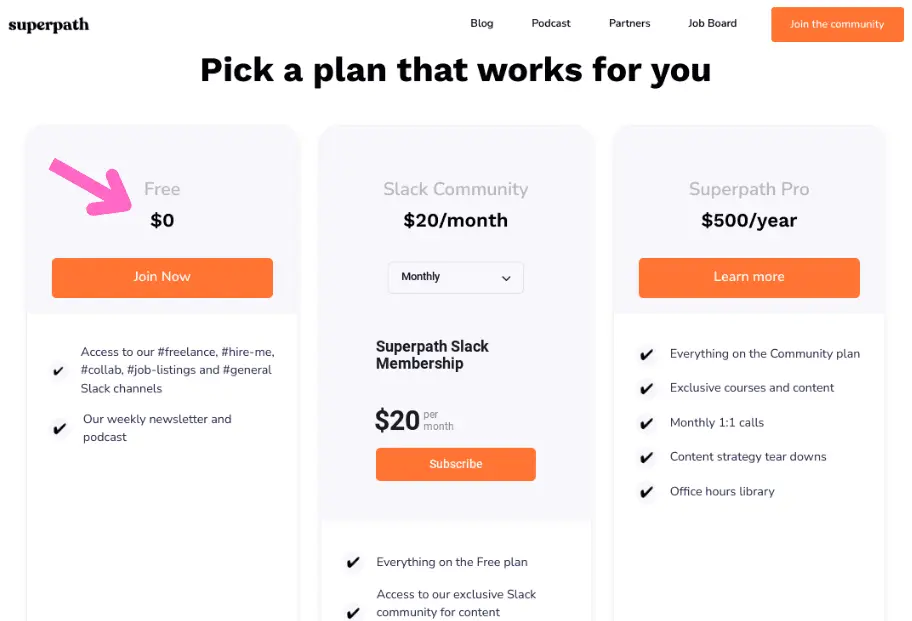
Superpath is a community for content marketers and content and copywriters. Not every content marketer may want to pay for access to their Slack community or the Pro membership just yet, so they created a free tier to give free members a feel for what’s on offer.
- Pro Tip: Always Offer Transparent Pricing
Ensure that your pricing is easy to understand and transparent. Hidden fees or complex pricing structures can deter potential customers by making them feel like they may be tricked into spending money.
Keeping your pricing dynamic is crucial to stay competitive and relevant. As you test these models, be sure to continuously monitor market trends, competitor pricing, and customer feedback. These elements will help guide your pricing strategy.
Get Comfortable with Data and Analytics
Data and analytics are a core component of running and tracking a peak-performing membership business. You learned about the value of using both earlier, but there’s much more to gain when you understand how to leverage data and analytics. They prevent you from making guesses about what you think isn’t working in your business, saving you time from failed initiatives that could lead to financial losses over time.
Knowing how to interpret your data will help you make tweaks that can unlock higher retention rates and more revenue. Here are 7 tips on what to pay attention to:
Identifying Patterns and Trends
Use descriptive analytics to understand past and current consumer behaviors. Analyzing subscription renewals, cancellations, and usage patterns helps identify what drives customer retention and churn. This insight is essential for making informed decisions about product development, marketing strategies, and customer service improvements.
Predictive Analysis for Future Trends
Predictive analytics help forecast future customer behavior and market trends. By analyzing data trends, such as purchase history, customer engagement, and feedback, you’ll be able to anticipate customer needs and preferences, allowing for proactive adjustments to services and offerings.
Personalization and Segmentation Data
You’ve learned about the importance of personalization and segmentation above, and data analytics is what makes it possible to track and improve with your community.
By understanding which personalized marketing campaigns, content, and service delivery aspect get the best and worst reactions, you’ll be able to lean into what works and away from what doesn’t. Understanding individual customer preferences and behaviors can also help you tailor offerings, creating a more relevant and engaging experience for each subscriber.
Data for Optimizing Pricing Strategies: Analyze customer data to understand the price sensitivity and perceived value of your services. Using results of conversions to paid customers, alongside upsells and cross-sell, and retention rates, you’ll be able to see which of your services are in demand and spot those that need to be repackaged using optimized pricing models .
Innovative Product Development
Utilize customer feedback and usage data to guide the development of new features or services. Understanding what customers value and need can drive innovation that keeps the subscription model fresh and relevant.
Enhancing Customer Experience
Continuously monitor customer satisfaction through customer feedback and usage data to enhance the overall customer experience. Paying attention to customer feedback and making iterative and impactful changes can give loyalty a boost and reduce churn.
Competitive Analysis
Use analytics to monitor competitors and market changes. Understanding your position in the market compared to competitors can guide strategic decisions to stay competitive and relevant.
You Can Do This
Subscription-based membership businesses are among the most attractive and lucrative models today. But starting one doesn’t guarantee success. You’ll need to keep tabs on your performance by tracking membership success.
Knowing your numbers, key metrics, and what factors and variables move the needle in your business is essential. And when you get a handle on how to pull the right levers for success, you’ll find it easier to scale to the moon.
Did you enjoy this article? Give Pics.io a try — or book a demo with us, and we'll be happy to answer any of your questions.




